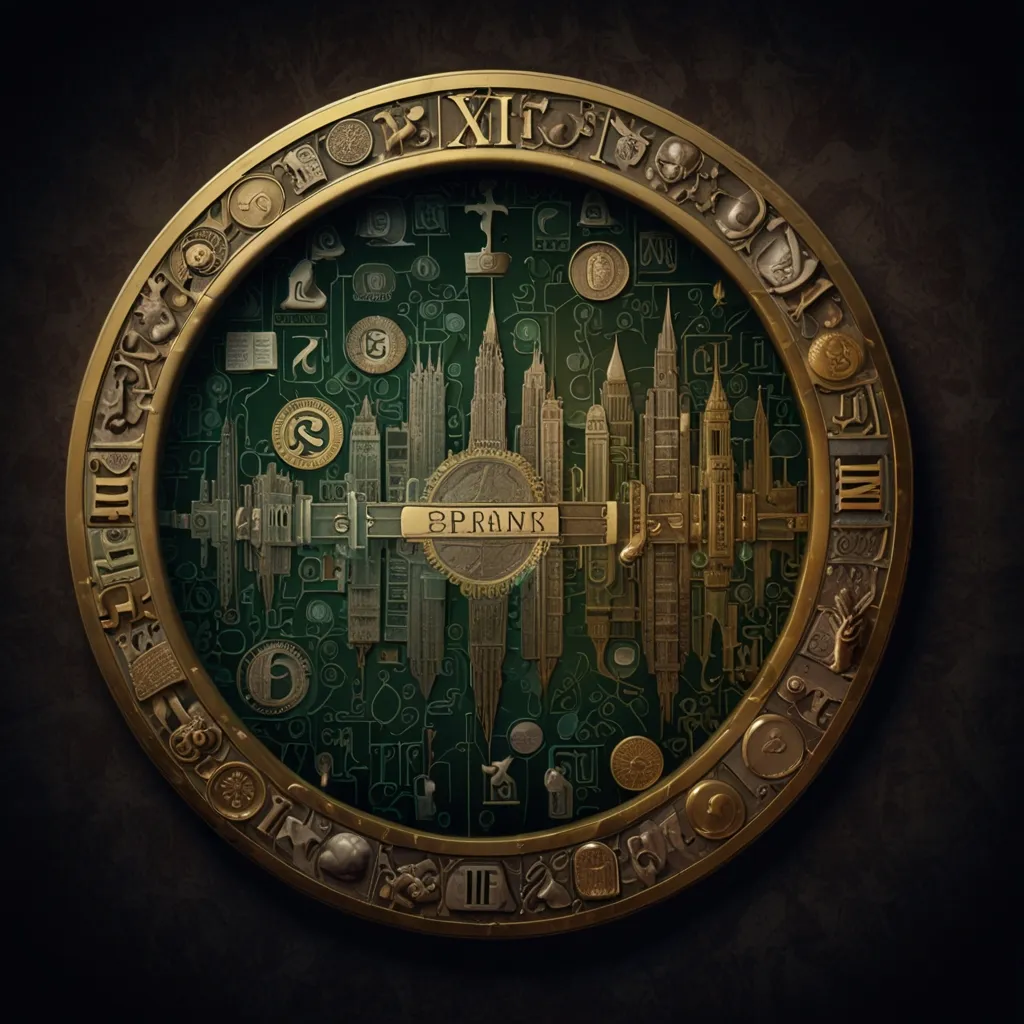The Gold Standard Era: Monetary Stability and Its Modern Lessons
The gold standard shaped global economics for decades, creating a framework that defined how nations conducted trade and managed their currencies. From the 1870s to the early 1920s, and briefly thereafter from the late 1920s to 1932, this system dominated international monetary relations[1]. I find it fascinating how this seemingly simple concept—backing paper currency with physical gold—had such profound effects on global finance and trade.
The foundation of the gold standard was straightforward: paper money could be freely converted into gold at a fixed price[2]. This created a direct link between a country’s currency and its gold reserves. When you held paper money during this period, you essentially held a claim on physical gold that could be redeemed at any time. The system established fixed exchange rates between participating countries, as each currency was defined by a specific amount of gold[3].
“Gold is money. Everything else is credit.” – J.P. Morgan
Have you ever wondered what gave people confidence in paper money before our modern banking systems? The answer lies in gold’s inherent value and limited supply. The gold standard provided a natural constraint on money creation—governments couldn’t simply print more currency unless they acquired more gold to back it. This limitation created monetary discipline that many economists still admire today.
The United States formally joined this monetary framework in 1879 when it resumed specie payments on Civil War greenbacks[4]. This move wasn’t just a technical change in monetary policy—it represented America’s commitment to financial stability and international trade norms. By defining its currency in terms of a specific quantity of gold, the U.S. aligned itself with a system that promised predictability in international commerce.
What would happen if your country suddenly announced it was returning to the gold standard? How would it affect your savings and purchasing power?
The classical gold standard period (1870s-1914) featured currencies that were freely convertible to gold at fixed prices, with no restrictions on gold imports or exports[3]. Gold coins circulated alongside other metal coins and paper notes, creating a tangible connection between everyday transactions and the precious metal backing the system. This physical manifestation of money’s value gave people confidence that their currency represented something real and limited.
Central banks during this era had two primary responsibilities: maintaining convertibility between paper money and gold, and helping to balance international payments[3]. These institutions functioned very differently than they do today, with far less focus on managing unemployment or stimulating growth during downturns.
“The gold standard is the world’s monetary constitution.” – Lewis E. Lehrman
The United Kingdom pioneered the formalized gold standard, putting it into operation in 1821[5]. Before this, silver had been the principal world monetary metal, but gold gradually assumed greater importance. This shift represented more than just a change in metal preference—it marked the beginning of a new approach to international finance that would spread across the globe.
I’m struck by how different this system was from our current monetary arrangements. Today, when central banks can create money through digital entries and governments can run persistent deficits, the gold standard seems almost like a relic from another world. Yet its principles of monetary discipline and intrinsic value continue to influence debates about financial policy.
One remarkable feature of the gold standard era was the unprecedented level of global economic integration it facilitated. With fixed exchange rates between major currencies, international trade and investment could proceed with minimal currency risk. Capital flowed freely between financial centers, creating a level of financial globalization that rivaled our modern era—but without computers or electronic transfers.
The system wasn’t without flaws, however. Countries experiencing trade deficits faced harsh adjustment mechanisms—declining prices, wages, and economic activity were often required to restore balance. Unlike today, when currencies can depreciate to help address trade imbalances, the gold standard forced adjustments through internal economic contraction.
“With the exception only of the period of the gold standard, practically all governments of history have used their exclusive power to issue money to defraud and plunder the people.” – Friedrich August von Hayek
Does a monetary system based on physical commodities provide more long-term stability than one based purely on trust in government management?
The gold standard ultimately couldn’t withstand the pressures of World War I. Countries abandoned gold convertibility to finance war expenditures through money creation—a practice the gold standard specifically prevented. This departure revealed a fundamental tension: while the gold standard promoted stability in normal times, it constrained policy flexibility during crises.
Despite multiple attempts to restore the system after World War I, the gold standard proved too rigid for the economic and political challenges of the interwar period. The Great Depression delivered the final blow, demonstrating how the system’s constraints on monetary policy could amplify economic downturns when flexibility was most needed.
For those of us thinking about modern financial systems, the gold standard offers valuable perspective. It demonstrates how monetary anchors can promote price stability and international coordination, while also showing the dangers of excessive rigidity. As we debate cryptocurrency systems, inflation targets, and international financial cooperation, the gold standard’s history provides essential context for understanding tradeoffs between stability and flexibility.
“The gold standard did not collapse. Governments abolished it in order to pave the way for inflation.” – Ludwig von Mises
The gold standard era witnessed remarkable price stability over the long term, despite short-term fluctuations. This environment created predictability for businesses and investors, encouraging long-term planning and capital formation. Modern central banks still pursue price stability, but through very different mechanisms—inflation targeting and interest rate management rather than metal convertibility.
I find it particularly relevant to consider the gold standard when examining today’s discussions about monetary policy independence. Under the gold standard, countries sacrificed monetary autonomy for the benefits of international stability and discipline. Today, central banks jealously guard their independence while still seeking international coordination—a balance the gold standard resolved through more rigid mechanisms.
What aspects of the gold standard might improve our current monetary system, and what features are best left in the past?
The system created natural limits on government spending and borrowing that no longer exist. Without the ability to create money beyond their gold reserves, governments faced hard constraints on deficit financing. This limitation had profound implications for the size and scope of government during the gold standard era—a stark contrast to the massive government debt accumulations we see today.
Critics of the gold standard point to its deflationary bias. When economies grew faster than gold supplies, price levels tended to fall. While modern economists typically view deflation as dangerous, the gold standard era suggests that mild, productivity-driven deflation need not be catastrophic. Prices fell gradually during much of the period, yet economic growth continued—challenging some conventional wisdom about monetary policy.
“The true standard of value is not gold or silver, but labor.” – Abraham Lincoln
The gold standard’s history also offers perspective on the relationship between monetary systems and inequality. By preventing inflation, the gold standard protected the value of savings and fixed incomes. However, its deflationary tendencies could benefit creditors at the expense of debtors, including farmers and workers with loans. These distributional effects remind us that monetary systems always create winners and losers—a reality that continues in our current arrangements.
For countries considering new monetary frameworks today, the gold standard illustrates both the benefits of rules-based systems and the importance of flexibility. The predictability and discipline of the gold standard promoted confidence and stability, but its rigidity proved problematic during crises. Modern monetary systems aim to balance these considerations through inflation targeting, transparent communication, and occasional flexibility.
As I reflect on the gold standard’s legacy, I’m struck by how its fundamental questions remain relevant: How do we create money that maintains its value? What role should precious metals play in our financial system? How much discretion should monetary authorities have? These questions continue to animate discussions about central banking, cryptocurrency, and international finance.
The gold standard era represents more than just an interesting historical period—it provides crucial context for understanding our current monetary arrangements and the tradeoffs they entail. By examining this system’s strengths and weaknesses, we gain perspective on the challenges facing monetary policymakers today and the various approaches to addressing them.
“In the absence of the gold standard, there is no way to protect savings from confiscation through inflation.” – Alan Greenspan
Have we gained more than we’ve lost by moving away from commodity-based money, or have we simply traded one set of problems for another?
The gold standard may be gone, but its influence lives on in debates about monetary policy, international coordination, and the proper role of central banks. By understanding this important chapter in economic history, we gain valuable insights that can inform current discussions about how best to organize our financial systems for stability, growth, and prosperity.






